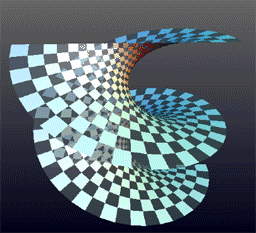The things I'm putting together are a view of cognition which is consistent with positioning theory, inasmuch that it emphasises relationships for thinking about cognition. The space between an illocutionary act and a perlocutionary effect is essentially a relational space. This means that we can abstract away details of complex mechanisms within an individual mind, and speculate on possible consistencies between inner and outer worlds: what is reflected in the inner world, is also available (and produced) in the outer world. The most obvious analogy to this is that of resonance (although I'm uncomfortable with Sheldrake's 'Morphic Resonance', maybe he's got something...?). A body resonates because it is in an environment which is sympathetic to the frequencies at which it resonates, and feeds back those resonant frequencies. I wonder if cognition is like this...
What if in the Viable System Model, the regulating layers were merely different frequency resonators? And some frequencies have an impact on others - both within the individual and socially? To what extent do 'higher' or lower frequencies 'regulate' other frequencies? I'm still thinking about this...
But the link between frequencies and the VSM means a number of things can be explored.. First of all, the work I am currently doing in social simulation, with different agents regulating each other like a big Ashby homeostat, can be thought of as a frequency spectrum. Then there is the issue of double description (or double-artitculation) in knowledge performances. A knowledge performance not only involves different frequencies of the different regulating mechanisms of an individual, but these frequencies are performed in a material context which determines that nature of performance: so we can have a content-focused performance, or a person-focused performance, or a tool-focused performance. Extending the 'frequency' analogy, I wonder if the different types of knowledge performance, and the resonance of individual VSM frequencies in a material context is rather like making sounds with different 'instruments': each instrument equates to a different context for a knowledge performance. Thus what happens is a very complex sort of 'orchestration': the regulating levels of an individual will be conditioned by the different sorts of resonant frequencies to be found in the environment: the same melody might be played by a tuba or by a violin; essentially they are the same, but have different properties.
The VSM categories, 'instruments' and a frequency spectrum all invite analysis of their symmetry... and that is one of the most interesting things about the social simulation... what it might reveal in terms of symmetrical diachronic patterns. And then of course, there's synchronic symmetry in terms of the relations between one frequency and another.
 But then we have to think about topology too... Because diachronic symmetry and synchronic symmetry meet at some point, where synchronic structures are changed in response to a recognition of diachronic pattern. (this seems to be what Mezirow's pedagogy is all about - fascinating). What do these topologies look like? (maybe a Riemann surface like this). This point at which synchronic structures are changed seems to occur when we become aware that our knowledge of the topology of our being is wrong, or usually, a double-bind. At those points a new topology is mapped out. I think...
But then we have to think about topology too... Because diachronic symmetry and synchronic symmetry meet at some point, where synchronic structures are changed in response to a recognition of diachronic pattern. (this seems to be what Mezirow's pedagogy is all about - fascinating). What do these topologies look like? (maybe a Riemann surface like this). This point at which synchronic structures are changed seems to occur when we become aware that our knowledge of the topology of our being is wrong, or usually, a double-bind. At those points a new topology is mapped out. I think...What's really fascinating me is that the topologies that we construct are very complex. I'm fascinated how similar this topology is to the cosmic topologies of the universe.. If they are toruses, knots, or Riemann surfaces of some sort, what does that all mean?? Or is that question just a new point on my own topology?

No comments:
Post a Comment